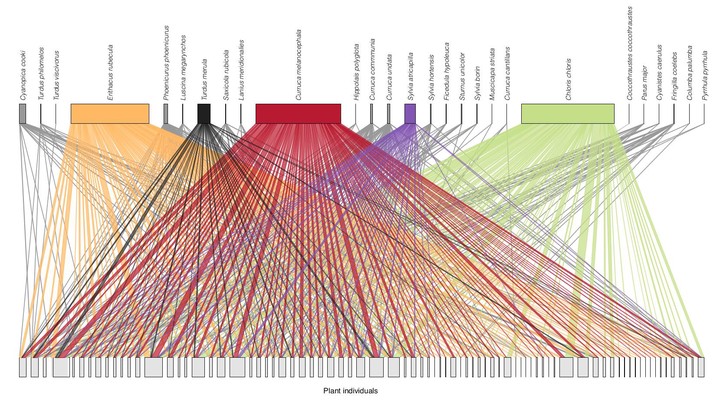Reciprocity and interaction effectiveness in generalised mutualisms among free-living species

Abstract
Mutualistic interactions among free-living species generally involve weak links and highly asymmetric dependence among partners, yet our understanding of factors beyond their emergence is still limited. Using individual-based interactions of a super-generalist fleshy-fruited plant with its frugivore assemblage we estimate the Resource Provisioning Effectiveness (RPE) and Seed Dispersal Effectiveness (SDE) to assess the balance in the exchange of resources. Plants were highly dependent on a few super-generalist frugivore species, while these interacted with most individual plants, resulting in strong asymmetries in mutual dependence. Both RPE and SDE were mainly driven by interaction frequency. Despite highly asymmetric dependences, the strong reliance on quantity largely determined high reciprocity in rewards between partners (i.e., higher energy provided, more seedlings recruited), not obscured by minor variations in the quality of animal or plant service. We anticipate reciprocity will emerge in low-intimacy mutualisms where the mutualistic outcome largely relies upon interaction frequency.
Podcast
Listen to a short, casual, AI-generated audio summary of the paper here.
Publication metrics
 Smart Citations
Smart CitationsSee how this article has been cited at scite.ai
scite shows how a scientific paper has been cited by providing the context of the citation, a classification describing whether it supports, mentions, or contrasts the cited claim, and a label indicating in which section the citation was made.